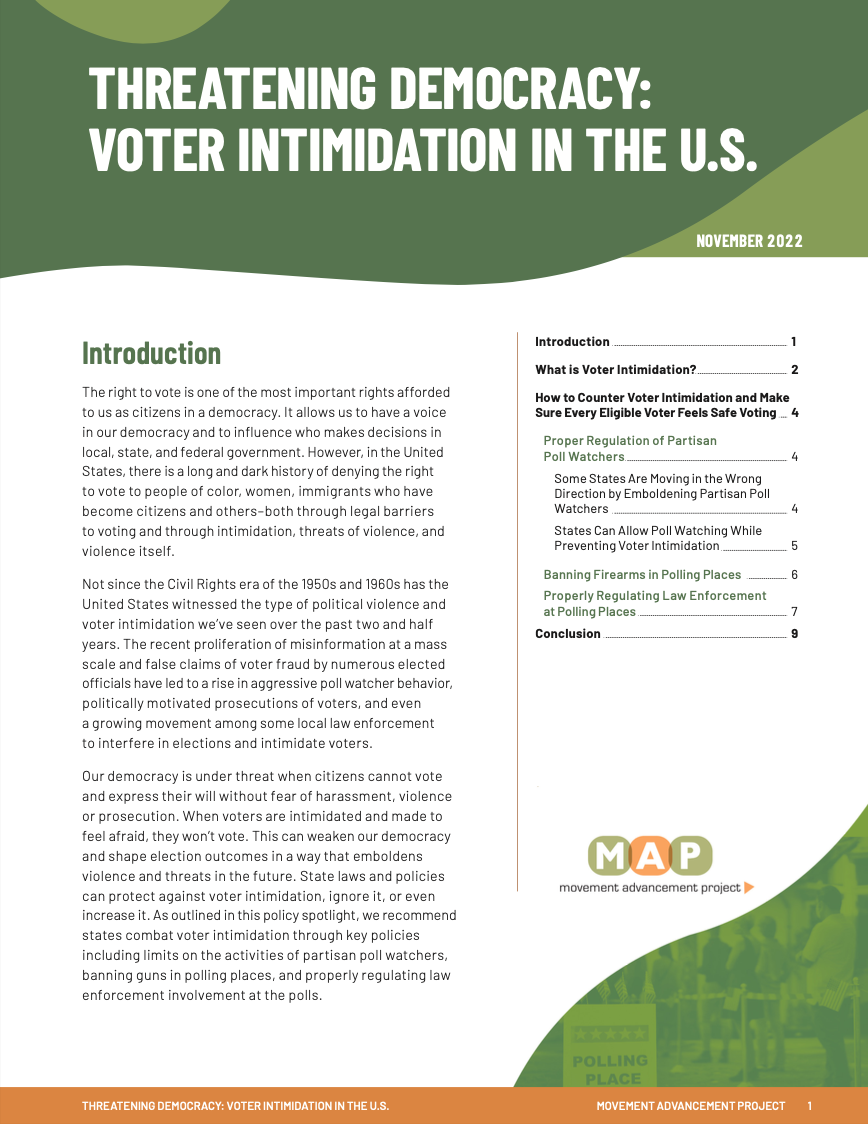Threatening Democracy: Voter Intimidation in the U.S.Download
Our democracy is under threat when citizens cannot vote and express their will without fear of harassment, violence, or prosecution. When voters are intimidated and made to feel afraid, they won’t vote.
Threatening Democracy: Voter Intimidation in the U.S. outlines historical and current ways that voter intimidation has been deliberately used to keep voters from the polls — and what can be done to stop it.
State laws and policies can protect against voter intimidation, ignore it, or even increase it. As detailed in this policy spotlight, we recommend states combat voter intimidation through key policies, including:
- Limits on the Activities of Partisan Poll Watchers
States can allow poll watching while also preventing voter intimidation by ensuring proper regulation and training. For example, election officials must be allowed to remove poll watchers who interfere with voting, are threatening, or who are otherwise disruptive.
Similarly, states should set clear guidelines for where poll watchers can be present within polling places and what they are allowed to do.
- Banning Guns in Polling Places
Only 10 states explicitly ban guns from polling places, including unlikely states such as Arizona and Texas. Voters in at least 28 states have reported seeing guns at polling places, which can both intimidate voters and even keep them from casting their vote.
- Properly Regulating Law Enforcement Involvement at the Polls
The general presence of law enforcement at polling places can result in a sharp reduction in voter turnout. This is particularly true for Black voters who faced a long history of harassment, intimidation, and violence from police. States should have clear guidelines on when law enforcement can be present at polls and what their role should be if they are called to a poll for security concerns, for example.
Recommended citation:Movement Advancement Project. September 2022.
Threatening Democracy: Voter Intimidation in the U.S.. www.mapresearch.org/Voter-Intimidation-Report-2022. [Date of access].


